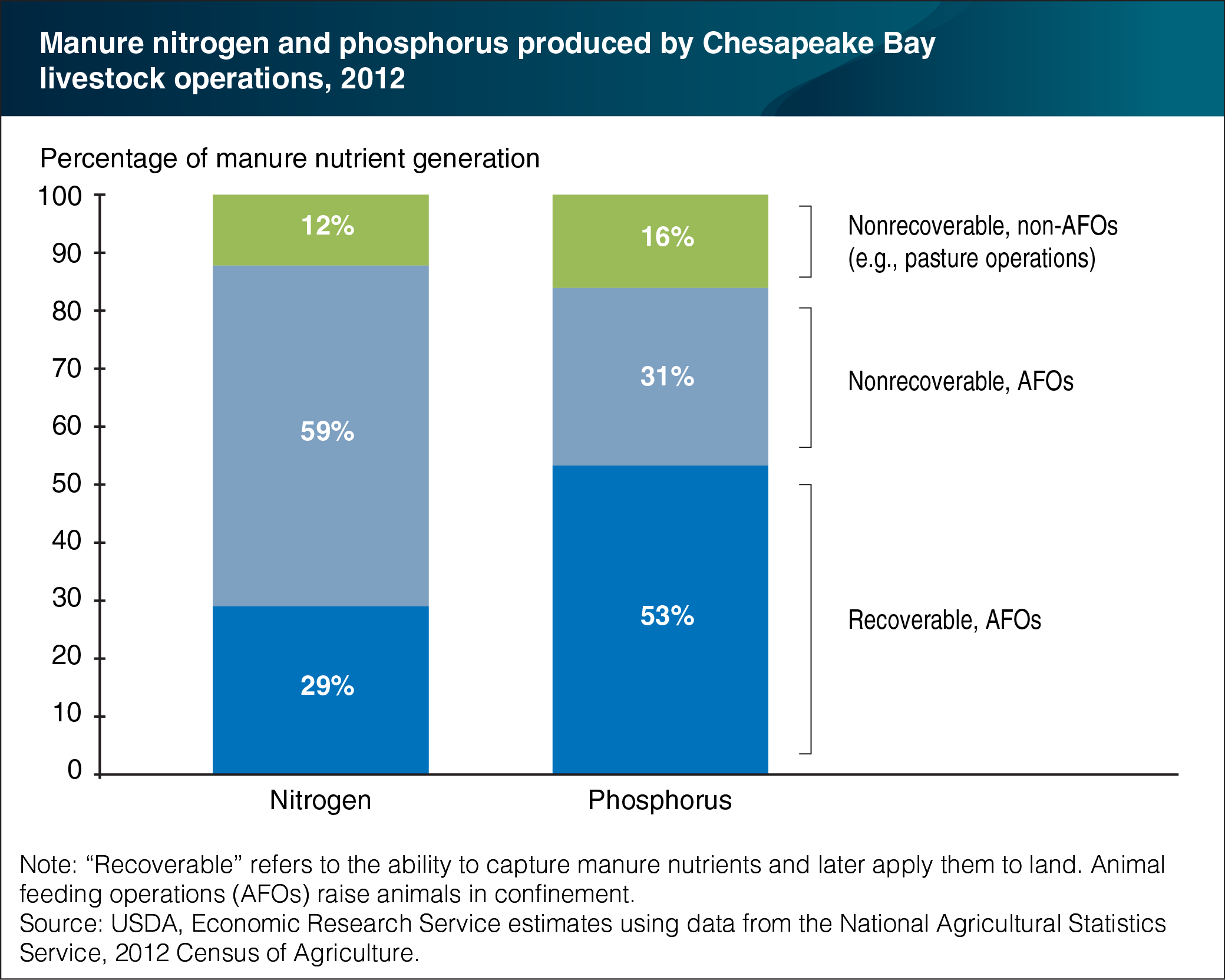Some manure nutrients produced in the Chesapeake Bay watershed can be captured for later use
- by Stacy Sneeringer
- 9/30/2016

In 2010, to help meet water quality goals, the U.S. Environmental Protection Agency (EPA) adopted a limit on the amount of pollutants that the Chesapeake Bay can receive. Nitrogen and phosphorus, in particular, can lead to adverse effects on public health, recreation, and ecosystems when present in excess amounts. The EPA estimates that applications of manure contribute 15 percent of nitrogen and 37 percent of phosphorus loadings to the Bay. Furthermore, ERS estimates that animal feeding operations (AFOs), which raise animals in confinement, account for 88 percent of manure nitrogen and 84 percent of manure phosphorus generation in that watershed. ERS also estimates that about a third of nitrogen and half of phosphorus produced at AFOs can be recovered for later use. That adds to about 234 million pounds of nitrogen and 106 million pounds of phosphorus recovered. These nutrients can then be redistributed regionally to fertilize agricultural land, thereby lessening nutrient run-off problems in the Bay. The remaining nutrients cannot be recovered. Both nitrogen and phosphorus may be lost during collection, storage, and transportation; nitrogen may also volatize into the atmosphere. This chart is based on the ERS report Comparing Participation in Nutrient Trading by Livestock Operations to Crop Producers in the Chesapeake Bay Watershed, released in September 2016.

